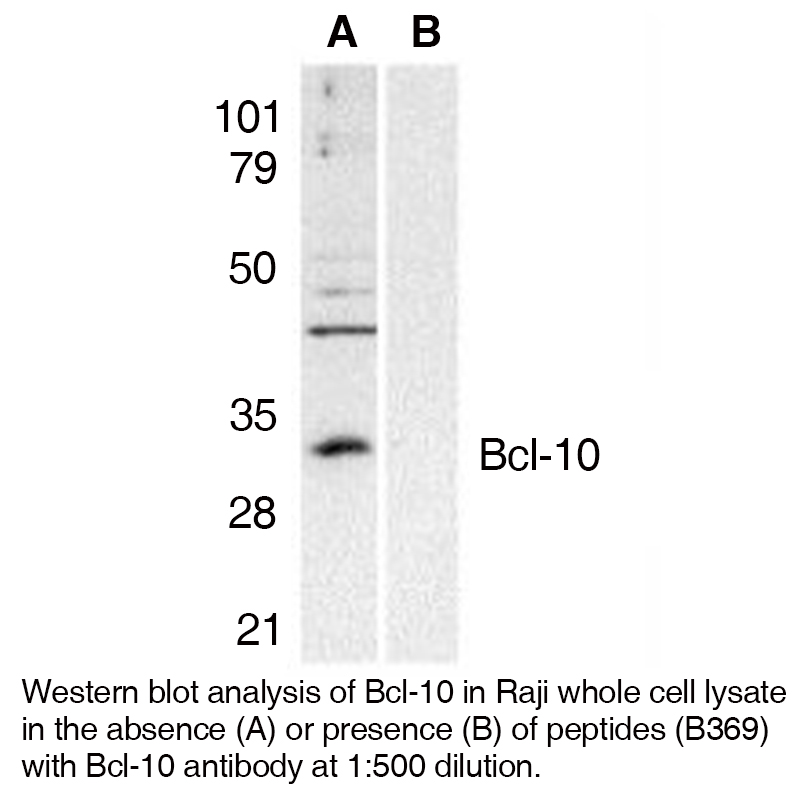Anti-Human Bcl-10 (NT)
Data
- -
- -
Antibody DetailsProduct DetailsReactive Species Human Host Species Rabbit Immunogen PN:B369 Product Concentration 0.5 mg/ml Formulation This polyclonal antibody is formulated in phosphate buffered saline (PBS) pH 7.4 containing 0.02% sodium azide as a preservative. Storage and Handling This polyclonal antibody is stable for at least one week when stored at 2-8°C. For long term storage, aliquot in working volumes without diluting and store at –20°C in a manual defrost freezer. Avoid Repeated Freeze Thaw Cycles. Country of Origin USA RRIDAB_2828169 Each investigator should determine their own optimal working dilution for specific applications. See directions on lot specific datasheets, as information may periodically change. DescriptionDescriptionSpecificity Rabbit Anti-Human Bcl-10 recognizes an epitope near the N-terminus of human, mouse and rat Bcl-10. This polyclonal antibody was purified using affinity chromatography. Background Apoptosis is related to many diseases including cancer. Cell death signals are transduced by death domain (DD) and caspase recruitment domain (CARD) containing molecules and a caspase family of proteases. CARD containing cell death regulators include ARC, RAIDD, Apaf-1, caspase-9, and caspase-2. A novel CARD containing protein was recently identified by several groups and designated Bcl10, CIPER, mE10, CARMEN, CLAP. Bcl10 is a cellular homolog of the equine herpesvirus-2 E-10 gene. Overexpression of Bcl10 induces JNK, p38, and NF-κB activation. Bcl10 interacts with caspase-9 and enhances pro-caspase-9 processing3 and induces apoptosis through caspase-9 activation . Bcl10 exhibits a variety of mutations in MALT lymphomas and in B and T cell lineage lymphomas indicating that it may be commonly involved in the pathogenesis of human malignancy . Bcl10 is expressed in many human and murine tissues and cell lines. PubMed References & Citations1. Willis, TG. et al. (1999) Cell 96(1):35-45 2. Koseki, T. et al. (1999) J Biol Chem 274(15):9955-61 3. Yan, M. et al. (1999) J Biol Chem 274(15):10287-92 4. Thome, M. et al. (1999) J Biol Chem 274(15):9962-8 Technical ProtocolsCertificate of Analysis |




